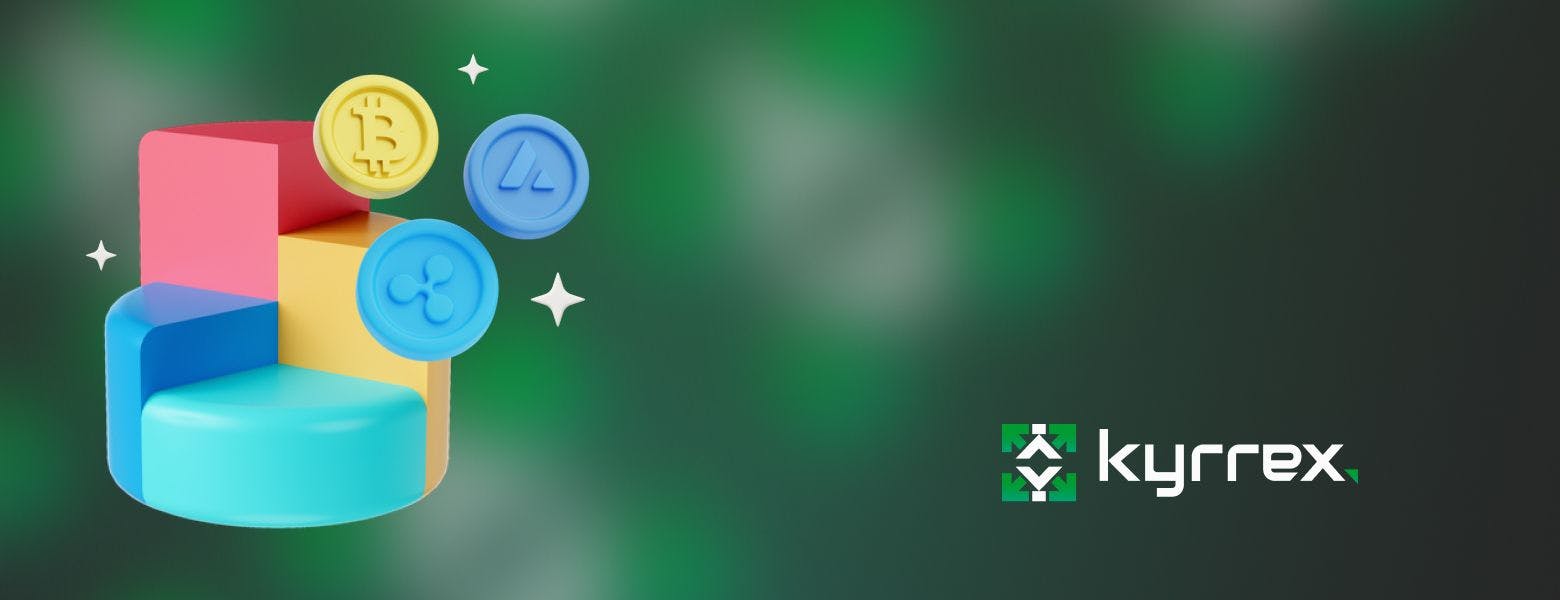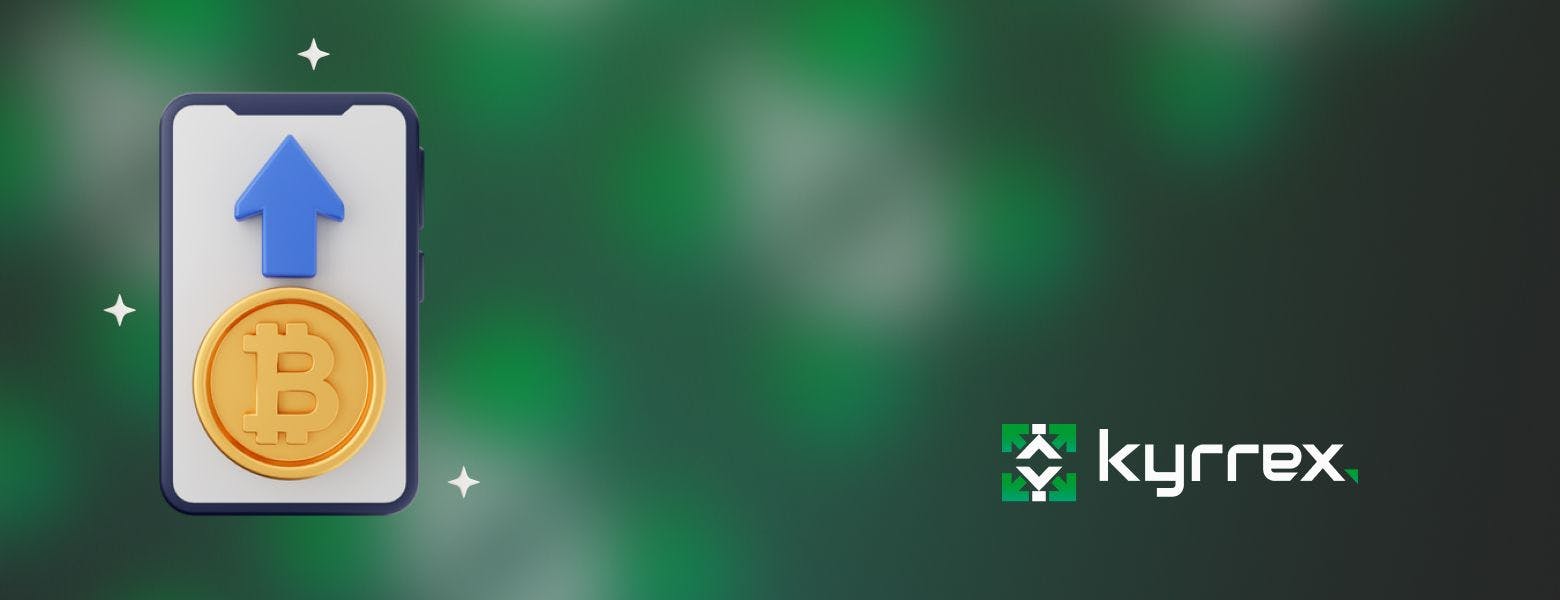
Top 9 Crypto Scams and How to Avoid Them

Cryptocurrencies are among the riskiest investments in the financial market. As with any business dealing, high-risk assets yield high returns and losses. That is why it's imperative you know what you're getting into before diving into the crypto world. While traders lose hefty sums every day due to market volatility, most inexperienced investors fall victim to crypto scams. These unfortunate incidents are painful because they can be avoided.
It was reported by Reuters that that scammers swindled investors an estimated $1.7 billion in cryptocurrency in 2018. OneCoin is an example of a world global scam that ripped investors off. This has led to some wary investors thinking that the entire idea of blockchain is a scam. Today, that number has grown even more, with the crypto market's capitalization surging past $2 trillion. This article will cover the most common Bitcoin scams today and how you can identify and avoid them.
First off, how do cryptocurrencies work?
To understand how scammers operate and the tactics they employ, you need to know how cryptocurrencies work.
Cryptocurrencies are virtual currencies that are based on a technology called blockchain. These currencies are secured by cryptography, hence the name "cryptocurrency."
The blockchain is a public ledger that records and facilitates cryptocurrency transactions. It can also be applied in other real-world use cases such as governance and decentralized finance using smart contracts.
Cryptocurrencies are one of the most secure assets to own as long as you don't give them up.
When you buy a coin, it gets transferred to your digital wallet. If you purchase any token through a centralized crypto exchange, you can withdraw it to an external wallet. Mnemonic phrases are used to protect and recover wallets. Whoever holds them has access to your crypto assets.
Scamming definition – Scammer definition
In the cryptocurrency market, scamming involves engaging in deceptive schemes or tricks to defraud unsuspecting investors of their crypto assets. Anyone who sends you a message offering to help with issues in your account or telling you about a great giveaway is a scammer meaning you should block them immediately.
How do scammers operate?
Every scammer's goal is to steal. Therefore, all their schemes and maneuvers are designed to fool you into handing over your assets. Since no one can just turn over their funds, these criminals engage in different clever schemes. From impersonation to outright hacking, they are ready to go all the way to siphon crypto assets. Crypto scammers start by sweet-talking unsuspecting investors about once-in-a-lifetime deals and get-rich-quick schemes. Since many already see cryptocurrencies as a fast way to make cash, it's easy to fall into the trap.
Once they are engaged in the conversation, fraudsters gradually get investors to reveal their wallet phrase or log-in details. In other cases, they defraud the investor by convincing them to invest in a scheme or transfer "transaction fees." Some scammers set up sophisticated websites with wallets and a dashboard. They'll show users balances and how their investments grow, full of fake Bitcoin transactions, ROI, and PNL statistics. Unfortunately, any money you send to these sites is likely gone, and sadly, you might only realize it when you decide to withdraw your funds.
Why are scammers succeeding?
The hype around cryptocurrencies isn't dying down despite the sad stories of people losing funds to scammers. That is because stories about massive gains and the crypto boom always dominate the headlines. However, scammers are mostly successful because new investors are quick to buy without doing their due diligence. In addition, fraudsters take advantage of eager crypto enthusiasts who are new to the scene and want to make fast cash.
Crypto scammers also exploit cryptocurrency's decentralization to get away with fraud. Since people can send and receive cryptocurrencies anonymously, investors can't identify who scammed them. That is what makes a cryptocurrency scam very dangerous. Users cannot seek relief or recover their funds since there's no way to track a perpetrator.
Top crypto scams:
Let's cover the common scams that fraudsters still use today to trick people.

1- Fraudulent ICOs
ICOs are the most popular fundraising methods for cryptocurrency startups. It's the best way to raise money for a new project with little to no regulation. Short for Initial Coin Offering, an ICO allows an investor to pay a small fee in exchange for a cryptocurrency that's yet to hit the market. Many ICOs are genuine and are run by trusted crypto platforms.
There are now different types of crypto fundraising, namely:
- IDO – Initial Decentralized Offering
- IEO – Initial Exchange Offering
IEOs are conducted on centralized exchanges, while decentralized platforms run IDOs. You should be conversant with these terms as fraudsters may want to use them to confuse you into sending them your tokens. ICOs, or presales as they're often called, are considered investment gold. This is because their ROI can be massive. To keep tokens valuable, ICOs are only open to a limited number of people. Most platforms run lotteries, randomly picking from a large pool of investors. In addition, IEOs and IDOs usually require users to stake other crypto tokens for a period to qualify for the presale event.
Many of the biggest cryptocurrency scams in crypto history were executed through ICOs. Scammers use the prospect of being selected for an ICO to entice and defraud investors.
A well-organized ICO scam can be difficult to detect. This is because fraudsters now take the time to create a convincing front. It's now easier than ever to create scam tokens on blockchains using fake currency names.
However, you can identify scam ICOs if you know what to look for.
How to identify and avoid ICO scams
- Please take a look at the project's whitepaper to understand what it's about.
- Any signs of unseriousness and inconsistency with messaging should turn you off.
- You should be skeptical about any project that keeps emphasizing the growth of the token's value more than its utility.
- Look for proof, such as demos, that the project does what it preaches.
- Check out the team behind the project and verify that the photos on its website aren't stock photos. People behind a scam fail to provide personal details and conduct interviews on purpose.
2- Social Media Scams

Social media is one of the major channels pushing cryptocurrencies to mass adoption. Unfortunately, it's also the main hunting ground for scammers. Intending investors naturally search Twitter, Facebook, Reddit, and Telegram to find out other people's opinions about a cryptocurrency token. Naturally, this drives them to either purchase or ditch the coin.
Scammers create multiple social media accounts and use bots to shape people's opinions about fraudulent crypto schemes. They set up accounts to look like cryptocurrency experts and tell the unsuspecting to send tokens to a particular address. People can even be drawn in by a scammer's comment about a cryptocurrency asset, giveaway, or airdrop under a celebrity's tweet. Cybercriminals also use bots to flood Facebook, Instagram, and YouTube comments section. The bots promote fraudulent cryptocurrencies and other related schemes.
You could receive unsolicited messages about a new coin that will soon be launched. The criminal could come in the guise of a customer support assistant or crypto developer.
Hackers also set up social media accounts to impersonate celebrities and companies to lure people into participating in sham crypto programs. In some cases, they go as far as hacking the real accounts and ask followers for crypto.
According to Guardian, in 2020, a hacker hijacked high-profile Twitter accounts, including Bill Gates's, Apple's, Uber's, and Elon Musk's, and urged followers to send Bitcoin to a particular address.
How to identify social media scammers and avoid them
- Avoid unsolicited messages asking you to send cryptocurrency assets to any address.
- Check out for blockchain info reviews and make sure they aren't posted by bots.
- Open the profile page of anyone promoting a coin to make sure they're not bots. To identify bots, look out for repetitive comments across different posts and incoherent messages.
- Ignore anyone who sends you a message claiming to be a customer representative or developer.
- NEVER give anyone the password or passphrase to any of your accounts or wallets.
3- Fake giveaways

Fake giveaways are rampant scams for which many investors fall victim. Scammers will offer you something for free but will end up asking you to make a small deposit to claim your rewards. You'll have to send cryptocurrencies first to a given address before they can hand over whatever they are offering. They disappear once you make the transaction.
In some cases, they'll ask for your wallet information or require that you click on a link. The link will ask you to log into your exchange account, input your passphrase, or change your passwords to claim your offer.
Once you send your wallet information or change your exchange account's password, they'll access your account and withdraw your funds. There are different variations of giveaways. They can be sent through your email address, Twitter DM, or Facebook inbox. You can also see announcements in social media comment sections such as Reddit, Discord, Twitter, and Facebook.
How to identify and avoid giveaway scams
- Unsolicited giveaways from strangers offering you loads of monies or opportunities to double your bitcoins are almost always scams.
- Never click on links you're not sure about and block and report accounts that send you these. Scammers use fake URLs to lure people into downloading spyware.
- Avoid giveaways that require you to send anything more than your name and wallet address. Never send cryptocurrencies to receive giveaway offerings.
4- Bitcoin mining scam

Bitcoin mining is one of the lucrative aspects of cryptocurrency. You get to use powerful machines to solve complex mathematical equations to unlock Bitcoin blocks. Each block comes with a number of tokens, which is halved every four years or after every 210,000 blocks. While it's a lucrative business, it's expensive to start up. For example, mining hardware will set you back hundreds to thousands of dollars.
However, to make things easy, some companies set up cloud mining for users who can't afford advanced mining hardware. These users pay a subscription fee to use the company's cloud mining resources. While there are genuine cloud mining companies, hackers often set up their own sites with cheaper subscription rates. They show users fake Bitcoin balances that they can never withdraw.
How to avoid Bitcoin cloud mining scams
You should consider avoiding cloud mining in any shape or form, whether it's legit or not. This is because you're better off using your subscription fees to buy actual crypto tokens. In addition, cloud mining these days is a bad investment as you'll likely never get returns that are worth your subscription fees and the time it takes to reach you.
5- Fake exchanges

Fraudsters are now sophisticated that they can clone decentralized and centralized exchange websites and use fake URLs. They Typically push these fake exchanges as mobile apps. However, they can also be presented as websites or desktop applications.
It's now easier than ever to start a crypto exchange. With as little as $1,000, fraudsters can set up websites that look like a DEX (decentralized exchange) or CEX (centralized exchange).
Fraudsters who clone sites like Coinexchanage scam their users by using fake balances and Bitcoin replicas. For example, you'll find tokens in your wallet once you sign up. You'll be notified that these funds can only be withdrawn after you've made a deposit.
You could also be offered huge bonuses upon your first deposit, all in a bid to get you to transfer funds to the platform. Once you deposit your money, you'll find that you can't withdraw, trading comes with exorbitant fees, and in severe cases, your account might be blocked almost immediately. Typically, there will be no customer care representative to handle your complaints, and every contact information on the site will be fake.
Scammers also use fake cryptocurrency wallets to steal information and funds. They create sophisticated wallets, especially mobile apps, that can steal sensitive account information. Some of these fake exchange and mobile wallet apps had even made it to the Google Play Store, where thousands of people downloaded them before they were removed.
How to identify and avoid fake exchanges and wallets
- While you might be looking for a better experience, it would be best to stick with popular exchanges and wallets.
- Verify that the exchange you're about to use has customer support.
- Use only KYC AML crypto exchanges.
- Check out the website's web traffic and its community on social media.
- Avoid downloading cryptocurrency wallets not hosted on your phone's app store, such as Google Play Store and Apple's App Store.
- Look out for scam coin prices by checking the price movements on the exchange against that of genuine exchanges or websites like coinmarketcap.com
6- Pyramid or Ponzi Schemes

Pyramid or Ponzi schemes lure new investors by promising them unrealistically high monthly, weekly, and even daily ROIs. These schemes are simple but worryingly effective. There have been many cases where pyramid schemes folded and bankrupted thousands and even millions of people.
Today, it has made its way to crypto. Scammers are now convincing people to invest in such schemes, promising huge Bitcoin and other cryptocurrencies payouts. You'll be approached with the offer, and after depositing your money, you'll get your first ROI from your initial deposits, not interest accrued from the scheme's businesses as advertised. The scammers will continue to pay out ROIs from funds deposited by new investors. The entire scheme relies on new investors bringing in money. Whenever the new cash flow can't sustain ROI payouts, the whole system crashes.
Pyramid schemes are not as sophisticated as their promoters make them out to be. For example, there are no professional cryptocurrency traders trading with your investments and making profits. And the scheme doesn't have a business plan to keep paying ROIs forever. The Trade Coin Club scam is an example of a cryptocurrency Ponzi scheme that relies on new customers to keep paying out ROIs.
How to identify and avoid pyramid schemes
- You should be skeptical of businesses that promise unrealistically high returns on investment that are too good to be true.
- Avoid investment schemes that go over and beyond to encourage you to bring in new investors.
- If a scheme instructs you to pay other investors, it's likely a pyramid scheme.
7- Rugpulls (pump and dump)

The bull season in 2021 saw many cryptocurrencies explode in value. As a result, unsuspecting investors began to flood into the market, buying new cryptocurrencies to catch the next train to prosperity. Hackers exploited this trend and began to create numerous coins without underlying utilities. They leverage the power of social media and the momentum of the bull run to convince and influence people into buying cryptocurrencies without carrying out proper research.
Most of these scammers will then manipulate the price of these coins, showing a good uptrend. Seeing this, investors will pick an interest and start buying these tokens. Once the market cap and value of these tokens begin to increase, other investors flood in. At some point, the scammer will pull the coin's liquidity, leaving investors penniless. Such schemes are called pump and dumps, and they mostly happen on decentralized exchanges such as Uniswap and Pancakeswap.
In most cases, you can't identify the fraudsters behind these tokens since decentralized exchanges don't require any registration process. You just have to connect your wallet, enter the token's smart contract address, and start trading. It doesn't go through the strict listing process required by well-known centralized exchanges.
An example is the Upcoin scam. The token was promoted by a prominent Youtuber who users considered a go-to resource. Unfortunately, he ended up selling off his entire bag, crashing the price of the cryptocurrency.
Fairmoon is another example. A cryptocurrency social media influencer who had taken over control of the project was alleged to have sold hundreds of thousands from the token's liquidity pool, tanking the coin's value by 96%.
Collectively, rugpulls are one of the biggest crypto scams as they wipe out millions of dollars from investor wallets.
How to identify and avoid pump and dump schemes
- Stay away from new meme tokens and "moonshots."
- The coins have no utility, and promoters are often clear in their message that the token's purpose is to make quick gains.
- By checking the coin's contract details on the blockchain explorer, you'll notice that one wallet holds most of the tokens.
- The whitepapers don't mention a clear roadmap, nor does the website.
8- Phishing

Phishing scams have been around long before cryptocurrencies came to the scene. Even cryptocurrency beginners know this type of scam. Fraudsters typically impersonate a company or person, sending emails or messages through chat apps or even using telephone calls to try and extract sensitive information from victims.
Most of the unsolicited emails you receive sound like your exchange informing you about a problem with your account. You are required to reply to the said message with information concerning your account, such as your password or cryptocurrency wallet passphrase.
Many users are pressured to give out this information because they are told that their accounts might be closed, and they might lose all their funds. However, fraudsters employ different phishing attack playbooks. For example, a link might be sent to your email address to download malware to your system. The link could also lead you to a Bitcoin doubler scam site that will ask you to deposit tokens to get double your Bitcoin.
The goal is to send such emails and messages to many random people hoping that one gullible investor will fall victim.
How to identify and avoid phishing scams
- Hang up unsolicited crypto calls telling you that your exchange account is experiencing problems. Go to the exchange's account to directly contact their help desk.
- Ignore and block any Bitcoin scam email extending crypto offers, warning you about an attack on your account, or telling you to claim a reward.
9- Crypto blackmail scams

Just like phishing attacks, scammers can send you emails pretending to be hackers with some damaging evidence about your activities. They threaten to send whatever they claim to have found to everyone in your contact list unless you send crypto to an address that will be included in the email. Even if you've engaged in any embarrassing activity, these scammers are constantly lying about access to such evidence. They send these emails to many people at once, hoping to land someone who'll be afraid enough to send tokens.
Sometimes, you might get an email detailing some information about you. These mostly come from fraudulent sites that you might have given some information such as your password hint.
How to identify and avoid crypto blackmail scams
- Always ignore these emails and never believe the scammers.
- The fraudsters never send actual evidence with the email.
- Keep your email address secure by changing your password and using two-factor verification.
How to get Bitcoin back from scammers
Unfortunately, there's no way to recover stolen funds unless the fraudsters decide to send them back. This is because the funds are now in cryptocurrency wallets that the scammer controls. There’s hardly anyway to help victims of a scam meaning they’ll likely never recover their funds.
Crypto AML and KYC

Centralized cryptocurrency exchanges enact KYC and AML policies in line with government regulations to curb money laundering and bad financial practices. Cryptocurrency is an appealing target for money launderers due to its lack of regulation and confidentiality. Laundered funds are typically acquired through unlawful business dealings such as scamming, drug and human trafficking, and theft. They are then used to finance diabolical practices such as terrorism.
AML (Anti-Money Laundry):
Consists of various regulatory policies that exchanges must follow to deter and report money laundering practices. These policies include KYC compliance and other measures enacted by regulatory government bodies.
KYC (Know your customer or know your client):
Is a process that every user registering on an exchange must go through to verify their identity. It's an AML procedure of utmost importance because it goes a long way in curbing financial practices that sponsor criminal activities.
KYC AML crypto policies prevent new users from accessing various crypto trading services until they've verified their identity. In addition, exchanges impose trade, deposit, and withdrawal limits.
How to tell if a company is legit
Firstly, make sure you take your time to learn about crypto hacks and find out everything you can about blockchains. This way, you can easily tell if a company is making things up. The good thing about crypto is that the tech makes sense even though it can seem complex. You can easily identify contradictions, which are serious red flags for any crypto project. Confirm that a company has a customer help desk that you can reach at any time.
Crypto exchanges like Kyrrex.com that comply with strict crypto KYC AML policies can be trusted. However, scammers can also use this as a front but without imposing strict deposit limits like legitimate exchanges.
You should also check for how long the company has been in existence and try to confirm its consumer base.
Conclusion
It's not enough to just head to Google and type "Is life token legit?" You'll likely see fake blog posts hyping the token. Instead, head to its webpage to check out its whitepapers, details, and roadmap. Also, check how long it's been in existence and if it's good enough to be listed on reputable exchanges. Never send crypto funds to anyone, and avoid sending your private keys for any reason. No legitimate giveaway or customer service representative will ask for your money, password, or wallet key.



